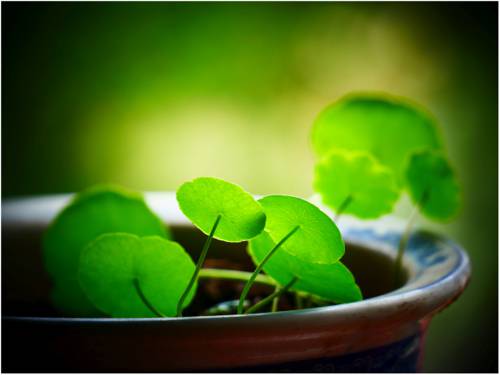
FAQ About Indoor Plant Leaf Humidity Interaction

How does humidity affect indoor plant leaves?
Humidity plays a vital role in the health of indoor plant leaves. High humidity levels can prevent excessive water loss through transpiration, helping plants remain hydrated. Conversely, low humidity can lead to increased transpiration, causing leaves to dry out and become stressed. Maintaining an optimal humidity level ensures that plant leaves remain healthy and vibrant.

What is transpiration in plants?
Transpiration is the process by which moisture is carried through plants from roots to small pores on the underside of leaves, where it changes to vapor and is released into the atmosphere. This process is crucial for nutrient uptake, temperature regulation, and maintaining water balance within the plant.

Why do indoor plants need humidity?
Indoor plants require humidity to maintain moisture levels crucial for physiological processes such as photosynthesis and transpiration. Proper humidity ensures that the plants can effectively transport nutrients and maintain turgor pressure, which is essential for structural support.

What are signs that an indoor plant is experiencing low humidity?
Signs of low humidity stress in indoor plants include browning leaf tips, leaf curling, wilting, and overall reduced growth. These symptoms occur because plants lose moisture faster than they can absorb it from their surroundings.

How can I increase humidity for indoor plants?
To increase humidity for indoor plants, you can mist the leaves regularly, use a pebble tray filled with water, place a humidifier near the plants, or group plants together to create a microenvironment with higher humidity.

Can high humidity be harmful to indoor plants?
Yes, excessively high humidity can lead to problems such as mold growth, root rot, and fungal infections on the leaves. It is important to maintain a balanced humidity level that suits the specific needs of the plant species.

What is the ideal humidity range for most indoor plants?
The ideal humidity range for most indoor plants is between 40% and 60%. However, some tropical plants may prefer higher humidity levels closer to 70% or 80% to mimic their natural habitats.

Do different indoor plants have different humidity needs?
Yes, different indoor plants have varying humidity requirements. For instance, succulents and cacti prefer dryer conditions, while tropical plants such as ferns and orchids thrive in higher humidity.

How does low humidity affect photosynthesis in plants?
Low humidity can affect photosynthesis by causing the stomata (pores) on the leaf surface to close to conserve water, which reduces CO2 uptake. This ultimately limits the plant's ability to perform photosynthesis effectively.

What role do stomata play in a plant's interaction with humidity?
Stomata are small openings on the surfaces of leaves that regulate gas exchange and water vapor release. In response to humidity levels, stomata can open to allow transpiration and gas exchange or close to prevent excessive water loss under low humidity conditions.

Are there any devices that help monitor humidity levels around plants?
Yes, hygrometers are devices designed to measure and monitor humidity levels in the environment. They can be particularly useful for ensuring that indoor plants are kept within their ideal humidity range.

Can air conditioning and heating affect indoor plant humidity?
Yes, both air conditioning and heating systems can significantly lower indoor humidity levels. This can lead to drier air that may affect indoor plants by increasing their transpiration rates and risking dehydration.

What are some natural ways to maintain humidity for indoor plants?
Natural ways to maintain humidity include placing plants in naturally humid areas like bathrooms, using room-temperature water for misting, and strategically locating plants together to benefit from their collective output of humidity through transpiration.

Do plants take in water through their leaves in high humidity?
While most water absorption occurs through the roots, some plants can absorb water through their leaves and stems in high humidity conditions. This process can help them remain hydrated when soil moisture is limited.

Can misting be a solution for all indoor plants' humidity needs?
Misting can temporarily raise humidity around a plant but is not a comprehensive solution for all types. Some plants might require more consistent humidity levels, which can be better maintained with a humidifier or pebble trays.

How does humidity affect a plant's nutrient uptake?
Humidity affects transpiration, which in turn influences nutrient uptake. Higher humidity can reduce transpiration rates, leading to less nutrient movement from the soil into the plant roots, potentially affecting growth if not balanced properly.

Why might tropical indoor plants require more humidity than others?
Tropical plants originate from environments where humidity levels are naturally high. To mimic these conditions indoors, they require increased humidity to maintain their physiological processes and health.

How do I properly use a humidifier near indoor plants?
Place the humidifier a safe distance from plants to provide even coverage without over-saturating the foliage. It is best to run it during daylight hours and adjust settings according to the desired humidity levels for the specific plant species.

What common mistakes do people make regarding plant humidity?
Common mistakes include using misting as a sole solution for humidity, not checking humidity levels regularly, ignoring specific plant needs, and not adjusting seasonal changes that affect indoor humidity levels.
